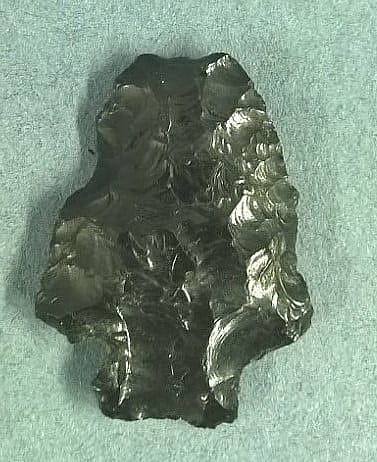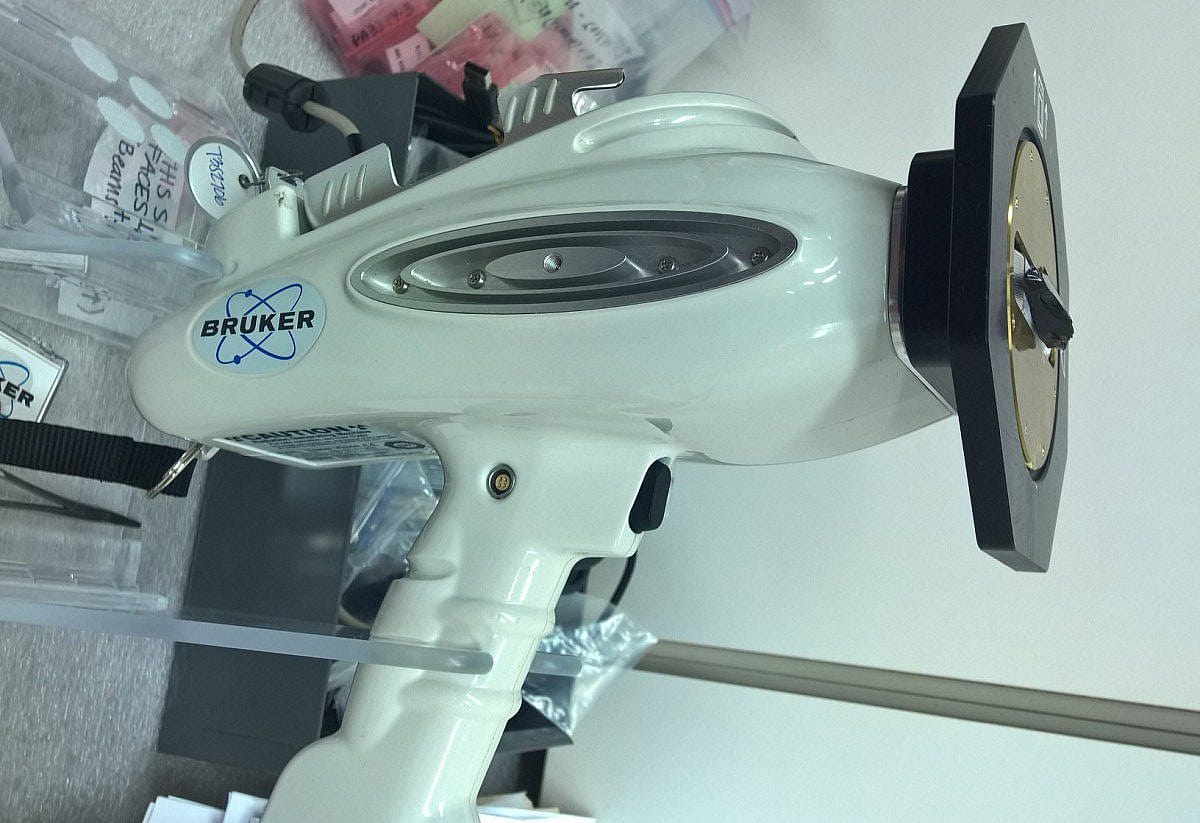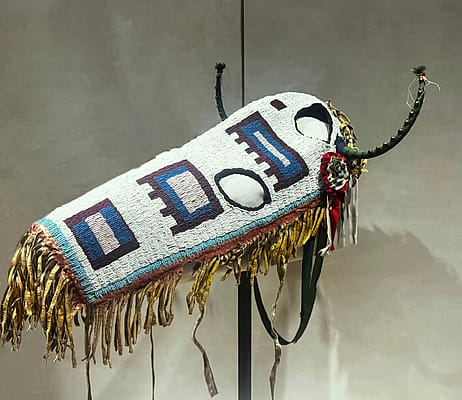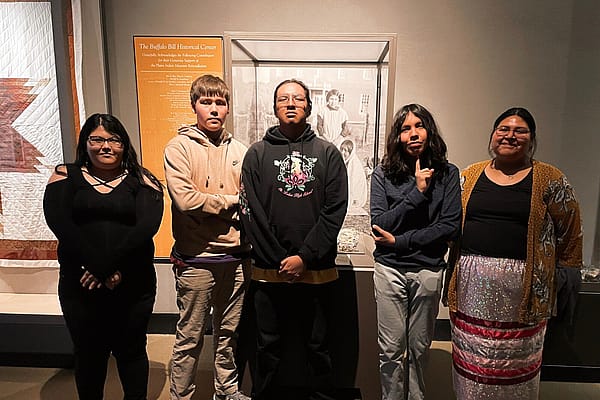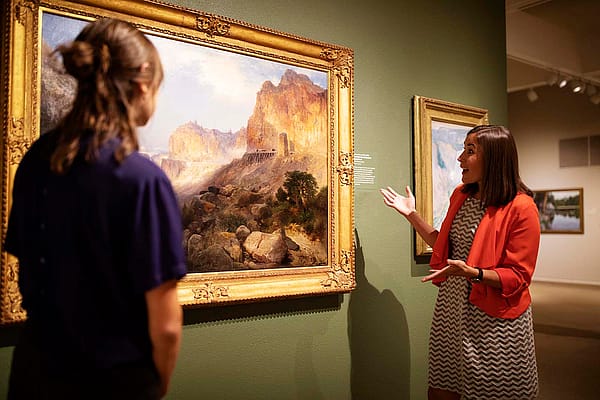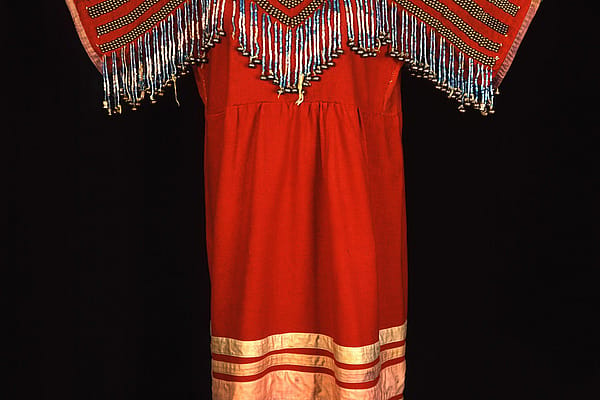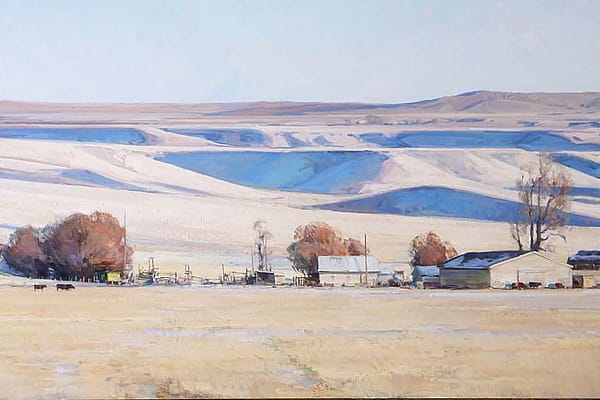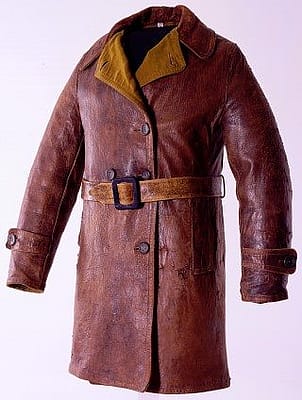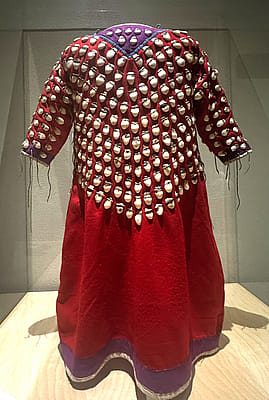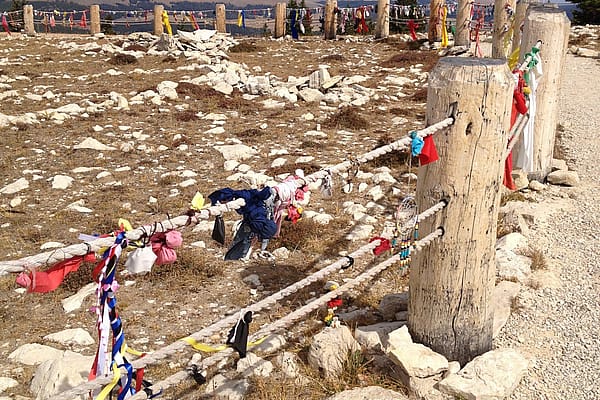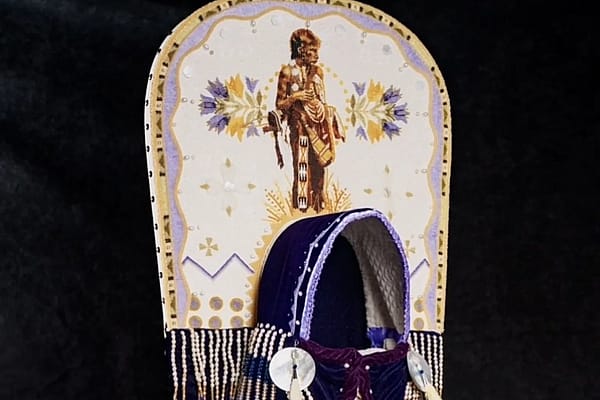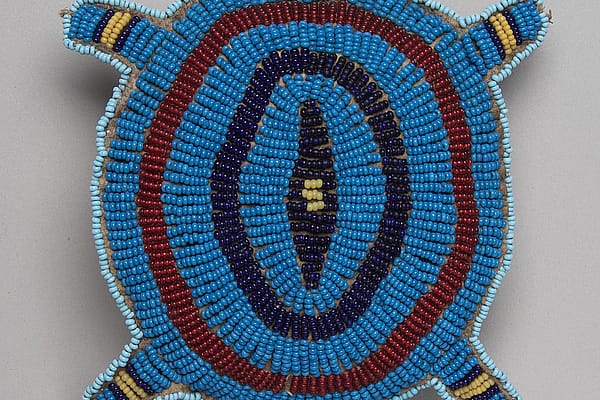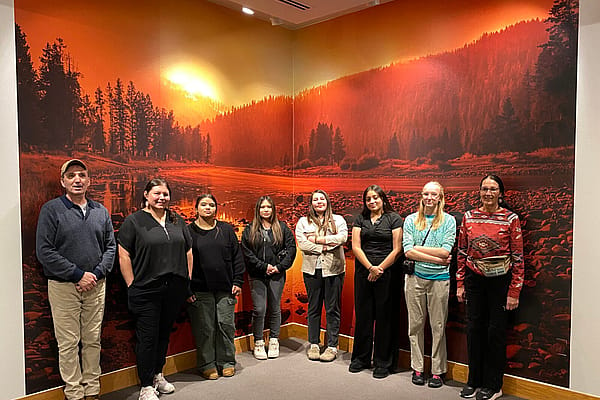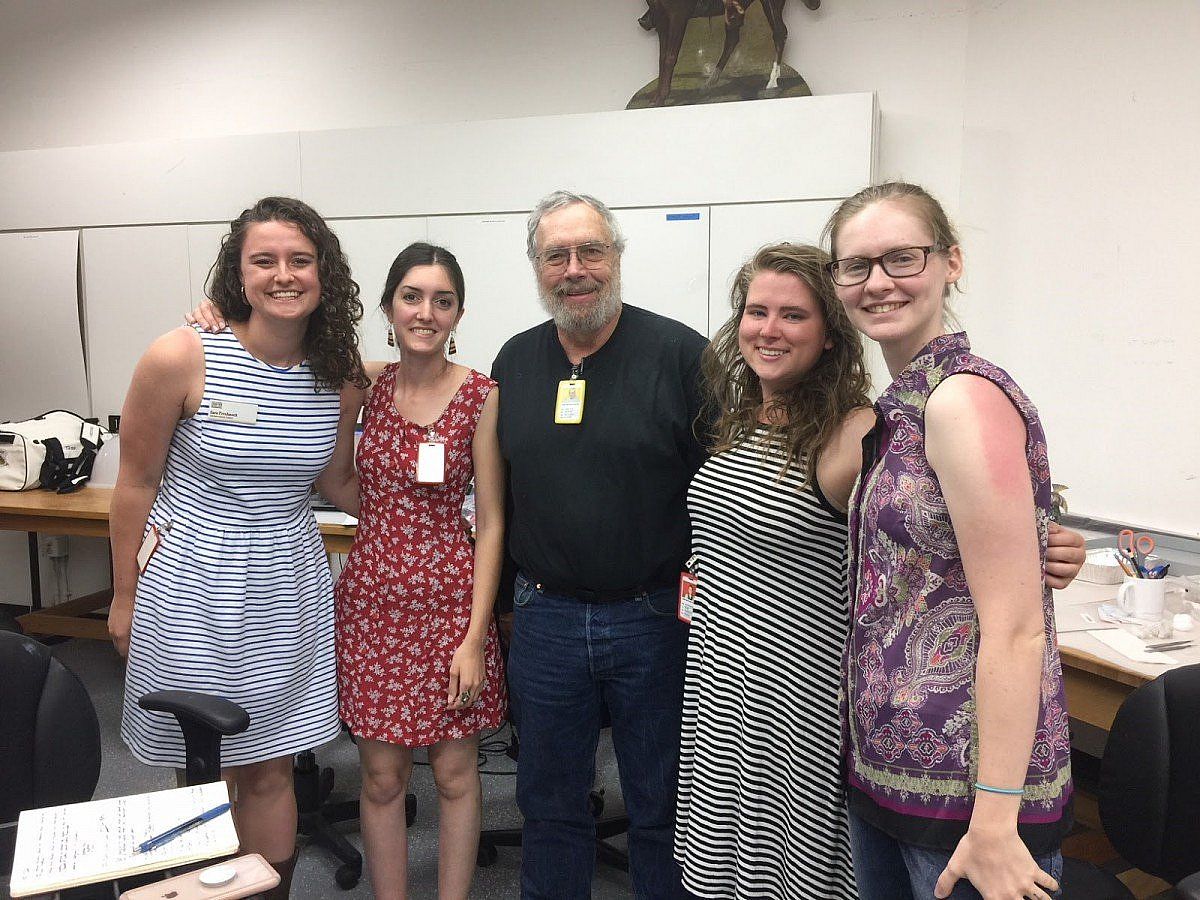
Analyzing Obsidian Lithics using Portable X-ray Fluorescence (pXRF)
Revealing how Plains Indians traversed the Washakie Wilderness
By Alyssa Rina and Kate Breitenstein
At the Buffalo Bill Center of the West (The Center), Conservation interns Alyssa Rina, Kate Breitenstein, Sarah Freshnock, and Brianna Connaghan are working closely with anthropologist Dr. Larry Todd, Research Associate for the Draper Museum, to diligently analyze 200 obsidian lithics collected from the Washakie Wilderness. Remanence of obsidian lithics is evidence of Native Americans of the Great Plains moving through the landscape. But what exactly is obsidian and how did Native Americans use it?
Obsidian is a naturally occurring volcanic glass that is generally black. It looks like a rock and is often called one, but it does not have the same structure that most rocks have. This is because of how obsidian is made. When magma rises to the surface quickly, it doesn’t have time to crystallize and form an internal structure, like other kinds of rocks. Instead, obsidian is made predominantly of silica and granitic magma. Glass is also made of silica, and like glass, obsidian breaks easily. It has a circular breaking pattern, which makes it possible to create tools (called knapping) with sharp edges.
Native American men often used obsidian to make tools for hunting (see Fig. 1) and women used these tools for working hides, making clothing, and preparing foods or foraging for roots and berries. Often the closer a tribe historically was to an obsidian source, the more frequent the tool was found as a common artifact. Additionally, obsidian sometimes held importance to different tribes and played a role in their society. For instance, the Wintu tribe near the volcanic site of Glass Mountain, California, had a creation story involving obsidian (Hogsden 2005).
But how exactly can we use science to inform our understanding of how Native Americans tribes of the Great Plains moved through and traded within Washakie Wilderness? In the Conservation Department, we are using a Bruker portable x-ray fluorescence (pXRF) spectrometer to analyze which elements are present in each obsidian lithic. This is a nondestructive way to analyze a sample because pXRF simply sends an x-ray beam through the sample. The x-ray is strong enough to displace electrons from the inner shells of an atom. This displacement creates an unstable vacancy, which results in electrons from higher orbitals relocating to fill the vacancy. The distance between the inner shell and higher shell of the electrons that fill the vacancy is specific to each element on the periodic table. pXRF then generates a spectrum (Fig. 2) with peaks that are indicative of present elements. Thus, we can provide a qualitative analysis of which elements are present within each lithic. However, there are some limitations to the pXRF Tracer. The device has difficulty quantifying the concentrations of elements lighter than potassium without the addition of a vacuum or helium purge. Although, the elements we are interested in finding in the obsidian lithics are heavy enough to be quantified.
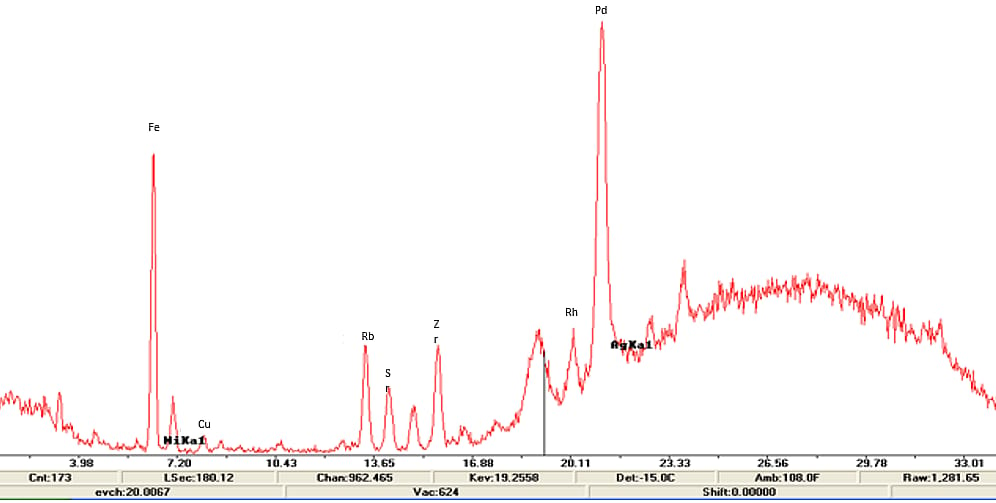
Since pXRF determines which elements are present in the obsidian lithics, we can use this information to link each lithic to a plausible obsidian source. We can do this because when obsidian magma flows through the volcano to the surface, it picks up small bits of minerals and elements on the way. These trace elements are unique to each volcano, like a fingerprint, and can be picked up by a pXRF Tracer. The elements we are particularly interested in finding within the lithics are Zinc (Zn), Gallium (Ga), Rubidium (Rb), Strontium (Sr), Yttrium (Y), Zirconium (Zr), Niobium (Nb), Barium (Ba), Titanium (Ti), and Manganese (Mn). Traces of these elements and rough quantities provide insight into where the obsidian lithic was sourced from. For example, if a tribe was not close to Obsidian Cliff in Yellowstone, yet elements found in some of the obsidian lithics suggest Obsidian Cliff as the source, it is plausible that the tribe either traded with others closer to the source or traveled through the wilderness to the source. Therefore, knowing the chemical signatures of obsidian lithics can help us approximate the trade network of Native American Plains tribes and how they traversed the wilderness.
This research project is part of a larger endeavor with Dr. Larry Todd. The summer Conservation interns, under the supervision of Chief Conservator Beverly Perkins at the Center and Dr. Todd, hope to publish the results and create a poster for the upcoming Anthropological Plains Conference in San Antonio- so stay tuned!

References
Miller, Jim. “Obsidian.” Lava domes, volcano world. Oregon State University. http://volcano.oregonstate.edu/book/export/html/205
Hogsden, S.F. 2005. “Obsidian spirits just speak once” – California Indians in a geothermal land.” Proceedings of World Geothermal Congress. Antalya, Turkey. 1-10.
Written By
Hunter Old Elk
Hunter Old Elk (Crow & Yakama) of the Plains Indian Museum at the Buffalo Bill Center of the West, grew up on the Crow Indian Reservation in Southeastern Montana. Old Elk earned a bachelor's degree in art with a focus on Native American history at Mount St. Mary’s University in Maryland. Old Elk uses museum engagement through object curation, exhibition development, social media, and education to explore the complexities of historic and contemporary Indigenous culture. She is especially inspired by the stories of Native American women who lived and thrived on the Plains. Facebook/ Instagram: @plainsindianmuseum
